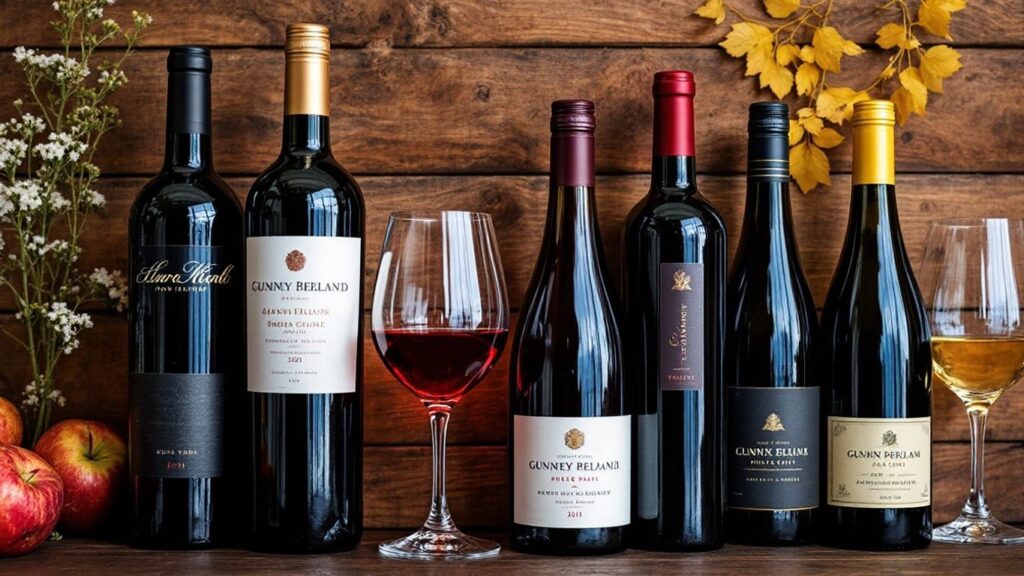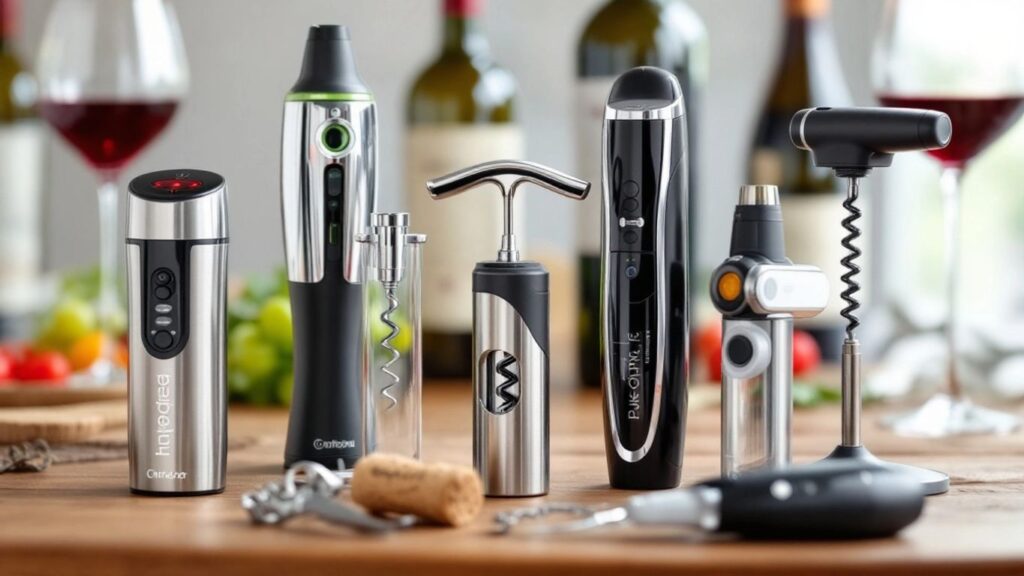Wine lovers often seek out bottles from famous wineries with long histories. These iconic brands have stood the test of time, producing exceptional wines for generations. Their stories are as rich and complex as the wines themselves.
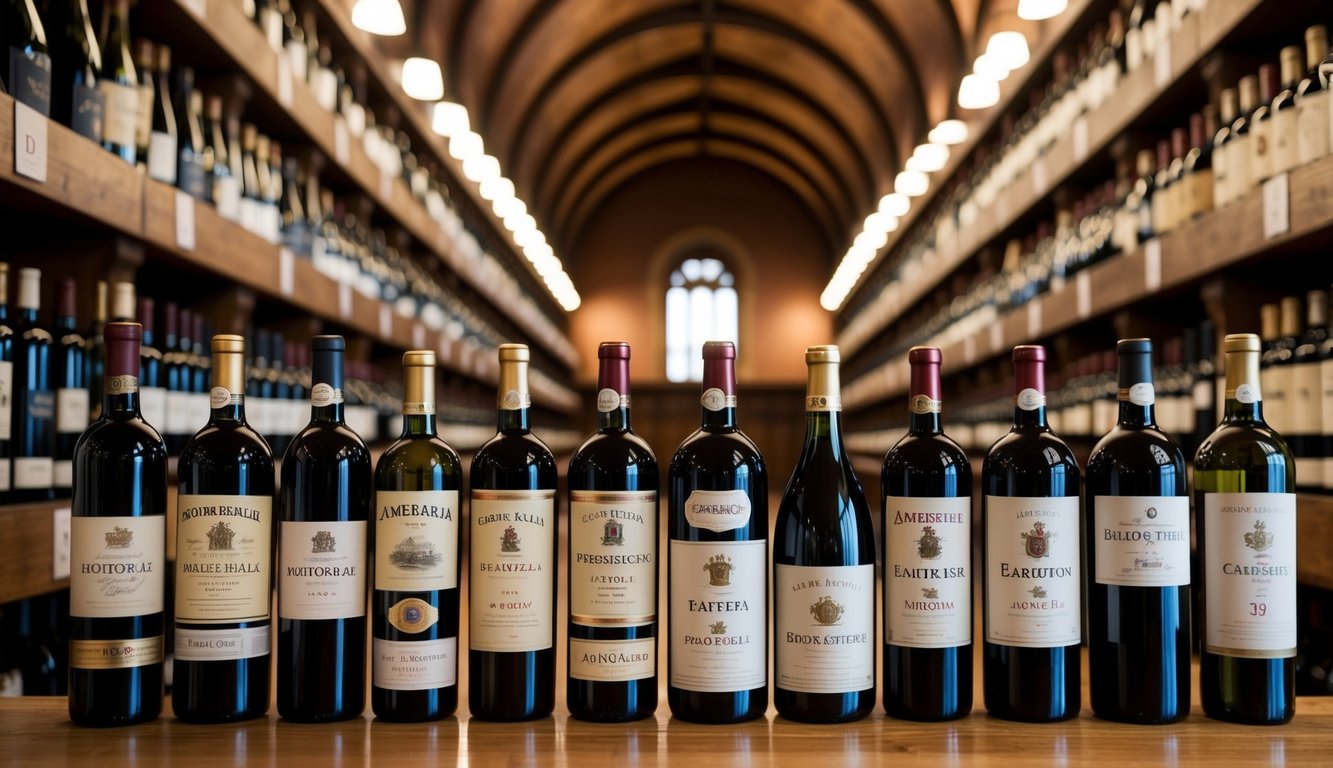
You can explore some of the world’s most renowned wine labels and learn about their unique backgrounds. From French Champagne houses to Italian estates and California vineyards, each brand has its own tale to tell. Discovering these stories can deepen your appreciation for the wines you enjoy.
1) Château Margaux
Château Margaux is one of the most prestigious wine estates in the world. It is located in the Bordeaux region of France and has a rich history dating back to the 16th century.
You’ll find Château Margaux’s iconic façade at the end of a shaded avenue, creating a breathtaking view. This estate has been producing exceptional wines for centuries.
The château’s wines are known for their elegance, complexity, and ability to age gracefully. Château Margaux consistently ranks among the top Bordeaux wines.
In the early 21st century, Château Margaux has embraced modern winemaking techniques while staying true to its traditional roots. This blend of old and new helps maintain the wine’s exceptional quality.
When you taste Château Margaux, you’re experiencing a piece of wine history. The estate’s flagship red wine is a blend of Cabernet Sauvignon, Merlot, Petit Verdot, and Cabernet Franc.
For the best experience, serve Château Margaux at 15.5 degrees Celsius. It pairs wonderfully with classic meat dishes, game, and roasted poultry.
2) Penfolds Grange
Penfolds Grange stands as an iconic Australian wine with a fascinating history. You might be surprised to learn that it was initially met with criticism.
In 1948, Max Schubert joined Penfolds with a bold vision. He aimed to create a wine that could compete with French legends. His dream led to the birth of Grange.
The early days weren’t easy. A tasting for senior management led to unfavorable reviews. But Schubert didn’t give up. He secretly continued production in Magill’s underground cellars.
Today, Penfolds Grange is celebrated worldwide. It’s known for its rich, layered flavors. The 2006 vintage, for example, offers intense fruit aromas with hints of mocha and vanilla.
You’ll find Grange among Penfolds’ top-tier offerings. It’s part of their Luxury & Icon range, which includes other prestigious wines like Yattarna Bin 144 Chardonnay.
When you taste Penfolds Grange, you’re experiencing a piece of wine history. It’s a testament to one winemaker’s perseverance and vision.
3) Antinori Tignanello
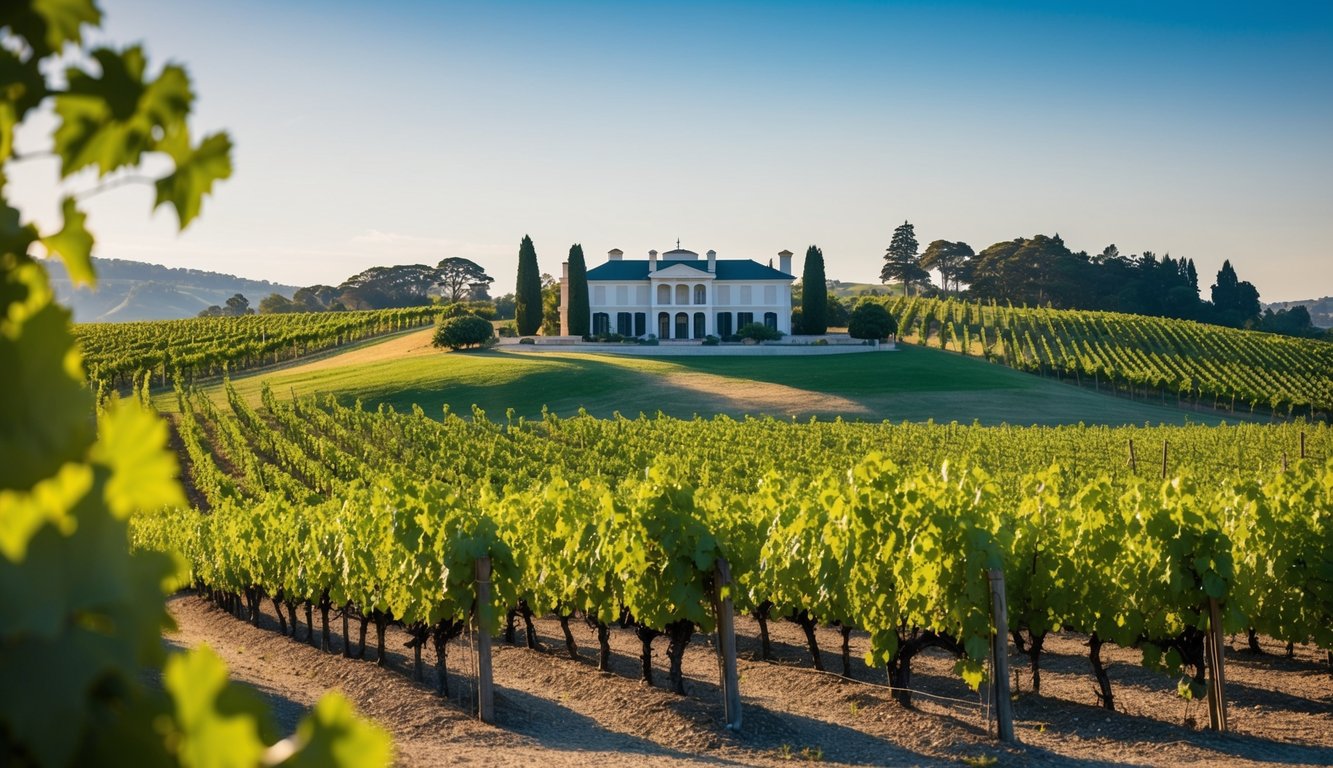
Tignanello is a groundbreaking wine that changed Italy’s wine culture. Created by the prestigious Antinori Winery, it first appeared in 1971.
This revolutionary blend combines Sangiovese, Cabernet Sauvignon, and Cabernet Franc grapes. Tignanello broke tradition by aging Sangiovese in barriques and blending it with non-Italian varieties.
You’ll find Tignanello produced in the heart of Chianti Classico. The vineyard’s calcareous marl limestone soils create the perfect home for both native and international grape varieties.
When you taste Tignanello, you’ll notice its quintessentially pretty flavor profile. It offers tart fruit flavors and redcurrant notes, making it a true Italian gem.
The wine’s impact extends beyond its taste. Tignanello inspired other winemakers in the region to experiment with their own innovative blends.
As you explore Italian wines, you’ll see why Tignanello stands out. Its blend of tradition and innovation has earned it a place among the world’s most influential wines.
4) Château Lafite Rothschild
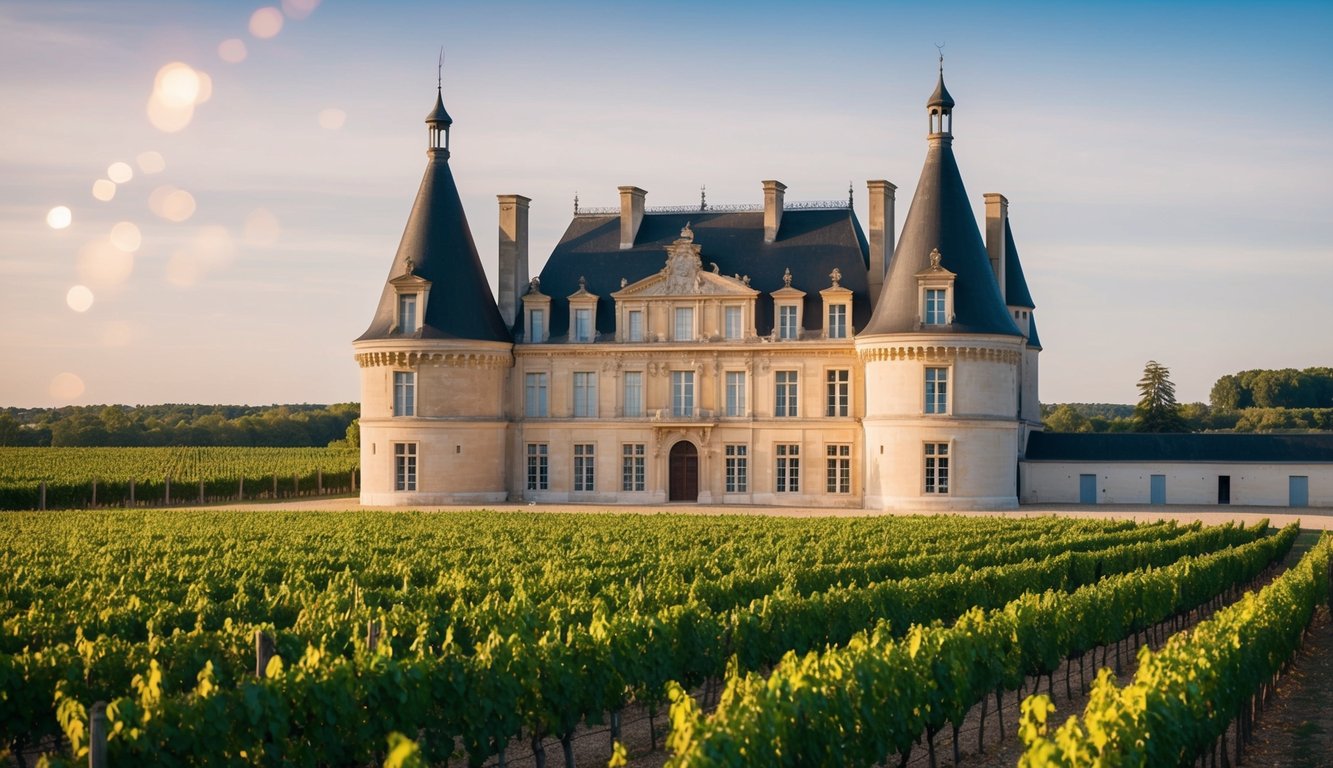
Château Lafite Rothschild is a legendary wine estate in the Pauillac region of Bordeaux, France. You’ll find its history dates back to the 13th century, making it one of the oldest wine producers in the area.
The estate gained prominence in the 18th century when it became a favorite among European nobility. Its wines were praised by notable figures like King Louis XV and Madame de Pompadour.
In 1868, Baron James de Rothschild purchased the estate, marking the beginning of the Rothschild family’s ownership. Under their stewardship, Château Lafite Rothschild has maintained its reputation for producing exceptional wines.
The estate’s wines are known for their elegance, finesse, and longevity. They often require significant aging to reach their full potential, with some vintages peaking between 15 and 60 years after bottling.
Château Lafite Rothschild holds the prestigious title of Premier Grand Cru Classé, awarded in the 1855 Bordeaux Classification. This recognition solidifies its status as one of the world’s most renowned and sought-after wines.
The estate’s commitment to quality and tradition has made it a benchmark for fine wines globally. When you taste a Château Lafite Rothschild, you’re experiencing centuries of winemaking expertise in every sip.
5) Barolo Monfortino
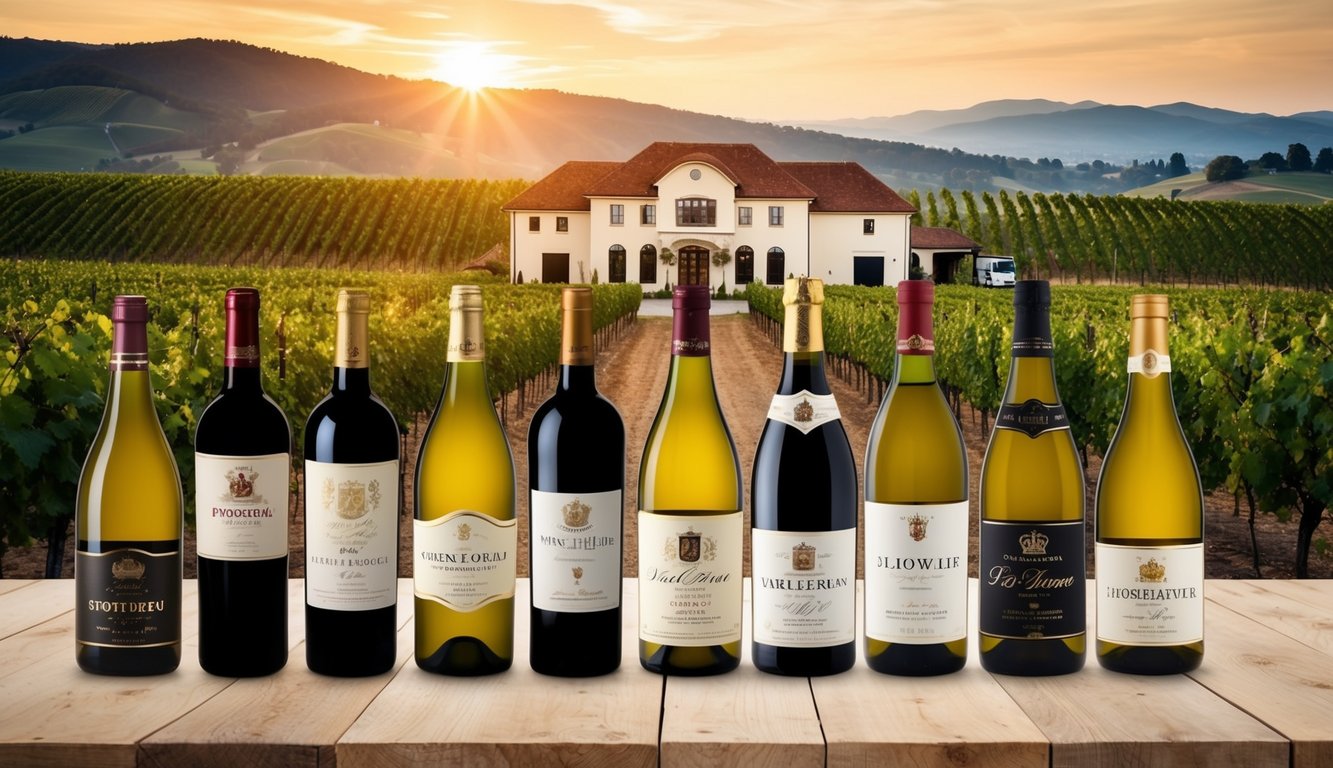
Barolo Monfortino is a legendary Italian wine that stands out among the most prestigious Barolos. This iconic wine comes from the renowned Giacomo Conterno estate in Piedmont, Italy.
The Monfortino Riserva is the crown jewel of the Conterno lineup. It’s made only in the best vintages and aged for an impressive 7 years before release.
You’ll find that Monfortino embodies the essence of traditional Barolo. It’s known for its rich, powerful structure and incredible aging potential.
The wine’s history dates back to 1920 when Giovanni Conterno created the first vintage. Since then, it has become a benchmark for excellence in Barolo production.
Monfortino is crafted from 100% Nebbiolo grapes grown in the prized Cascina Francia vineyard. The winemaking process involves long fermentations and extensive barrel aging.
When you taste Monfortino, you’ll experience a complex array of flavors. These often include tar, roses, and truffles, typical of high-quality Barolo.
Barolo Monfortino is highly sought after by collectors and wine enthusiasts worldwide. Its rarity and quality contribute to its hefty price tag and legendary status in the wine world.
6) Veuve Clicquot
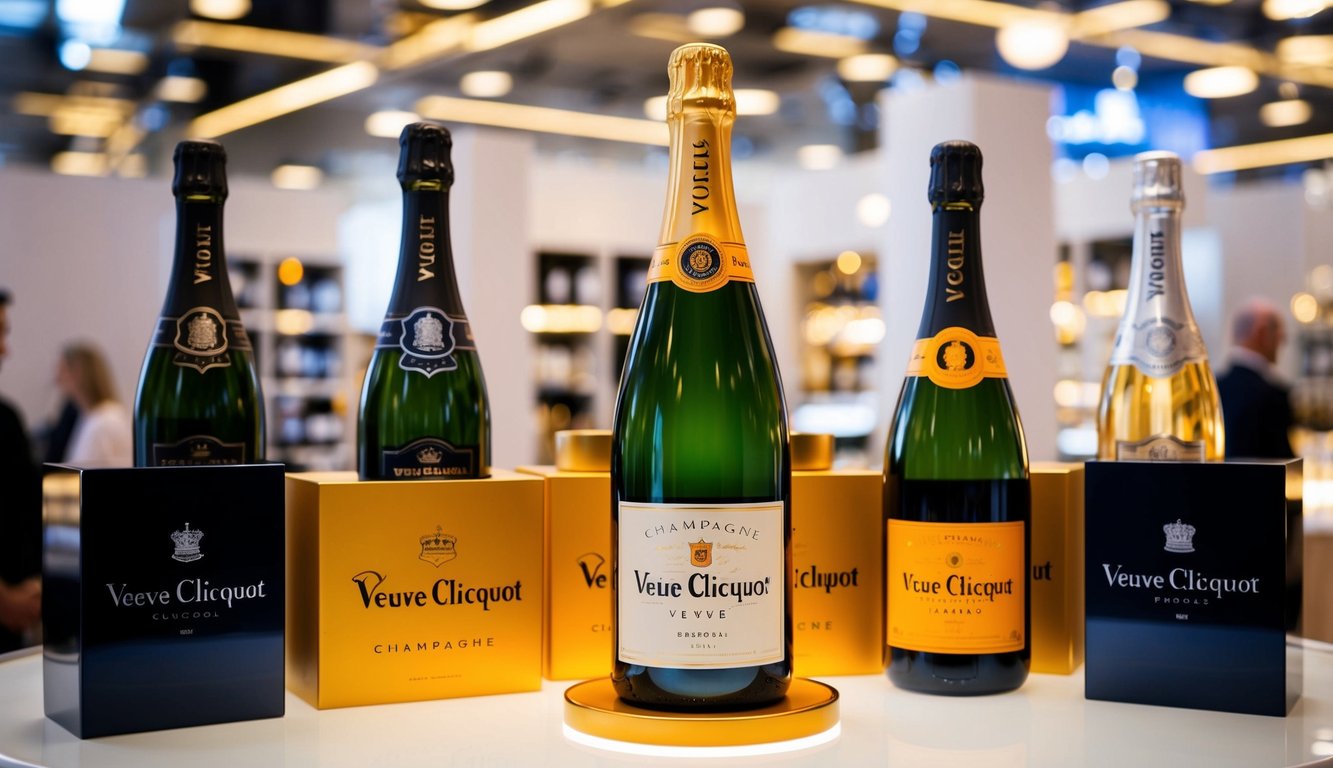
Veuve Clicquot is a name that stands for luxury and innovation in the champagne world. The brand’s history dates back to 1772 when it was founded in Reims, France.
The true story of Veuve Clicquot begins with Barbe-Nicole Ponsardin, who took over the company in 1805 after her husband’s death. She became known as the “Widow Clicquot” and transformed the brand into a global powerhouse.
Under her leadership, Veuve Clicquot pioneered new techniques in champagne production. She invented the riddling table, which improved the clarity of champagne.
The brand’s iconic yellow label, introduced in 1877, has become a symbol of quality and prestige. You can easily spot this vibrant identifier on shelves worldwide.
Veuve Clicquot’s commitment to excellence has made it one of the top-selling champagne brands globally. Its rich history and innovative spirit continue to captivate wine enthusiasts today.
When you pop open a bottle of Veuve Clicquot, you’re not just tasting champagne. You’re experiencing a piece of history crafted by a visionary woman who changed the industry forever.
7) Opus One
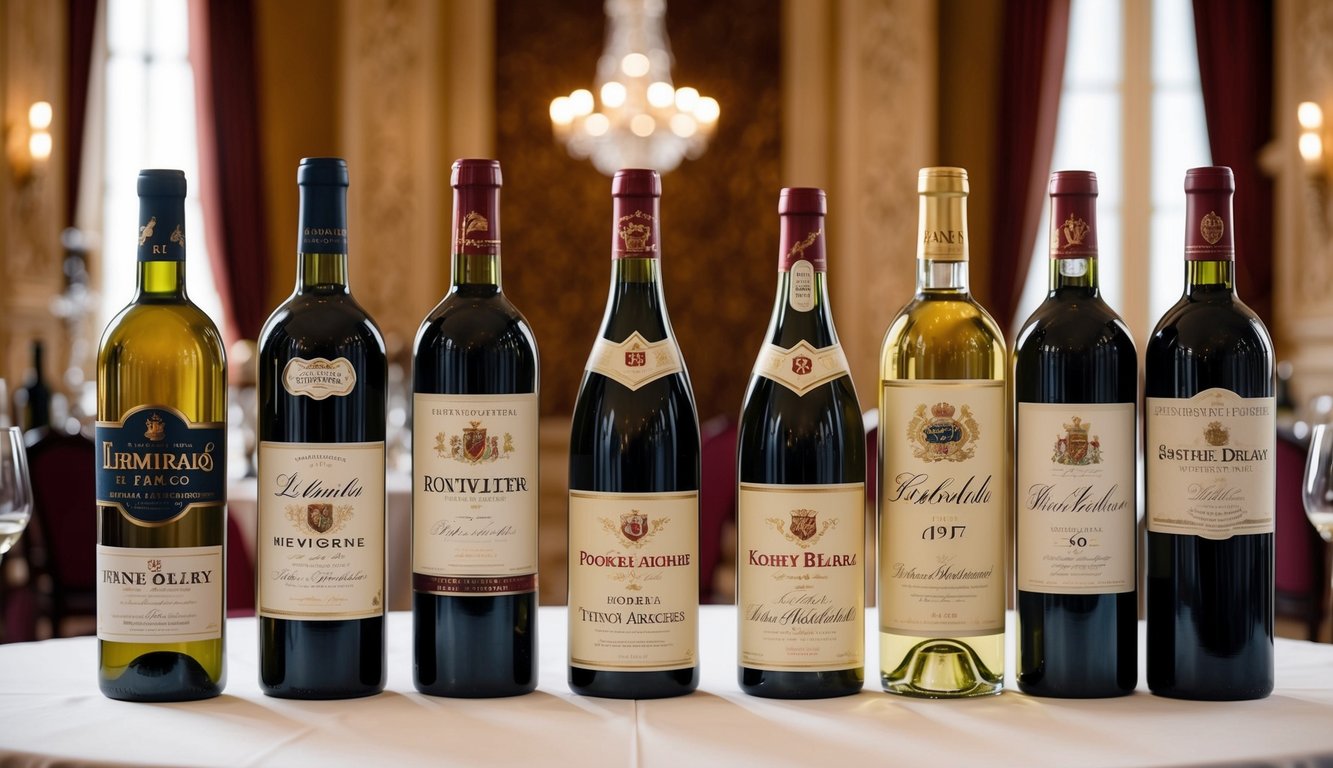
Opus One is a renowned winery that has made its mark in Napa Valley. You might recognize it as a symbol of collaboration between two wine legends. In 1978, Robert Mondavi and Baron Philippe de Rothschild joined forces to create this iconic brand.
They had an ambitious goal – to craft a Napa Valley wine that could rival the best from Bordeaux. They succeeded in producing a Cabernet Sauvignon-based blend that gained worldwide acclaim.
Opus One’s stunning winery architecture captures attention. It blends modern design with classical elements, reflecting the fusion of Old World and New World wine traditions.
The brand’s flagship wine, also called Opus One, is known for its quality and consistency. You’ll find it offers fresh red fruit aromas with subtle notes of black tea and white pepper. Its creamy texture and satin finish are hallmarks of its style.
While Opus One commands premium prices, many consider it a relative bargain compared to other cult Napa wines. You can expect to pay around $350 for a current vintage bottle from their website.
8) Sassicaia
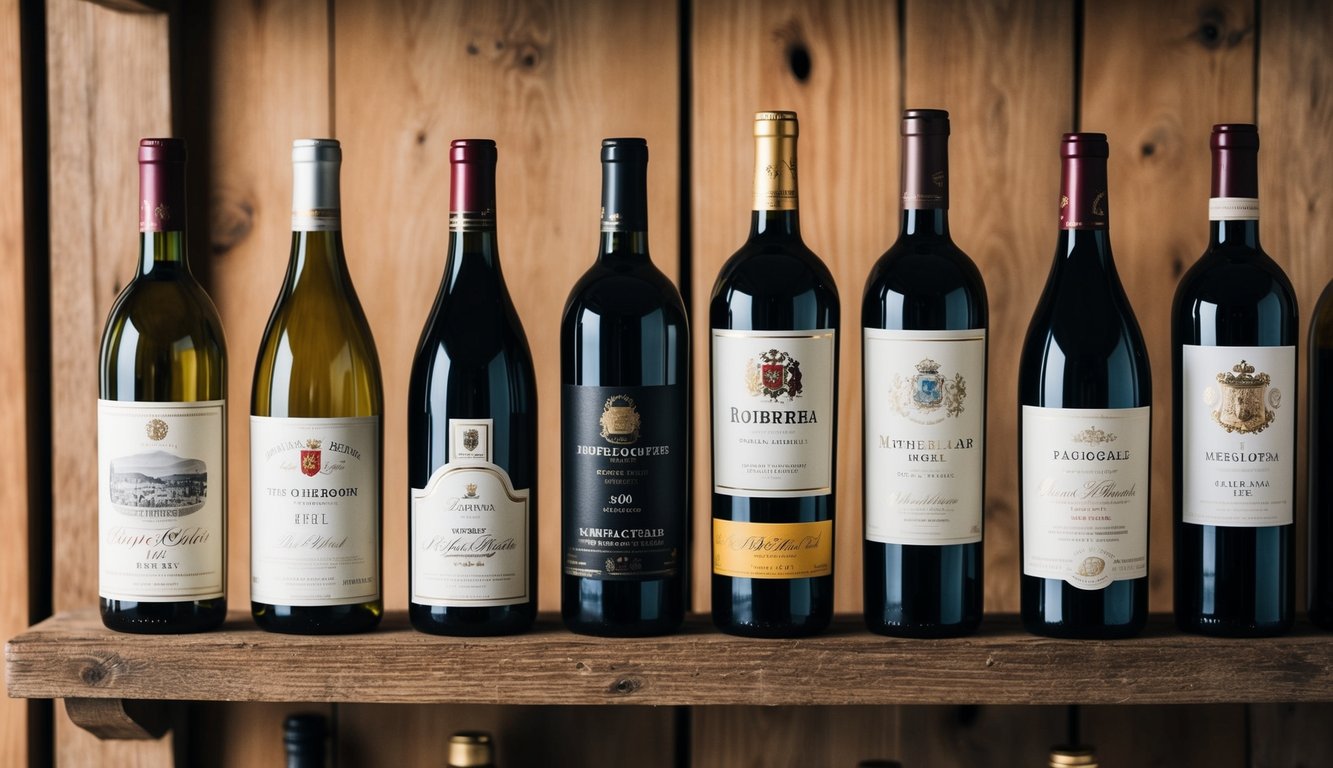
Sassicaia is a legendary Italian wine that changed the course of wine history. Born from a controversial experiment, it became one of the most sought-after wines in the world.
The story of Sassicaia began in the 1940s when Mario Incisa della Rocchetta planted Cabernet Sauvignon vines in Tuscany. His goal was to create a wine similar to the great Bordeaux he loved.
Initially, Sassicaia was just a family wine. But its quality improved over the years, thanks to careful aging and the help of talented winemakers. In 1972, Sassicaia finally entered the wine market with its iconic label featuring a golden windrose on a blue field.
The wine’s reputation grew quickly. In a blind tasting competition for ‘Great Clarets’, the 1972 Sassicaia beat 33 wines from 11 countries, winning its first international award.
Today, Sassicaia is known for its elegance and class. The 2012 vintage, for example, offers rich yet vibrant flavors with classic Cabernet structure.
You’ll find Sassicaia among the top Italian wine brands, alongside other famous names like Tignanello and Ornellaia. Its unique story and consistent quality have secured its place in wine history.
Historical Significance of Iconic Wine Brands
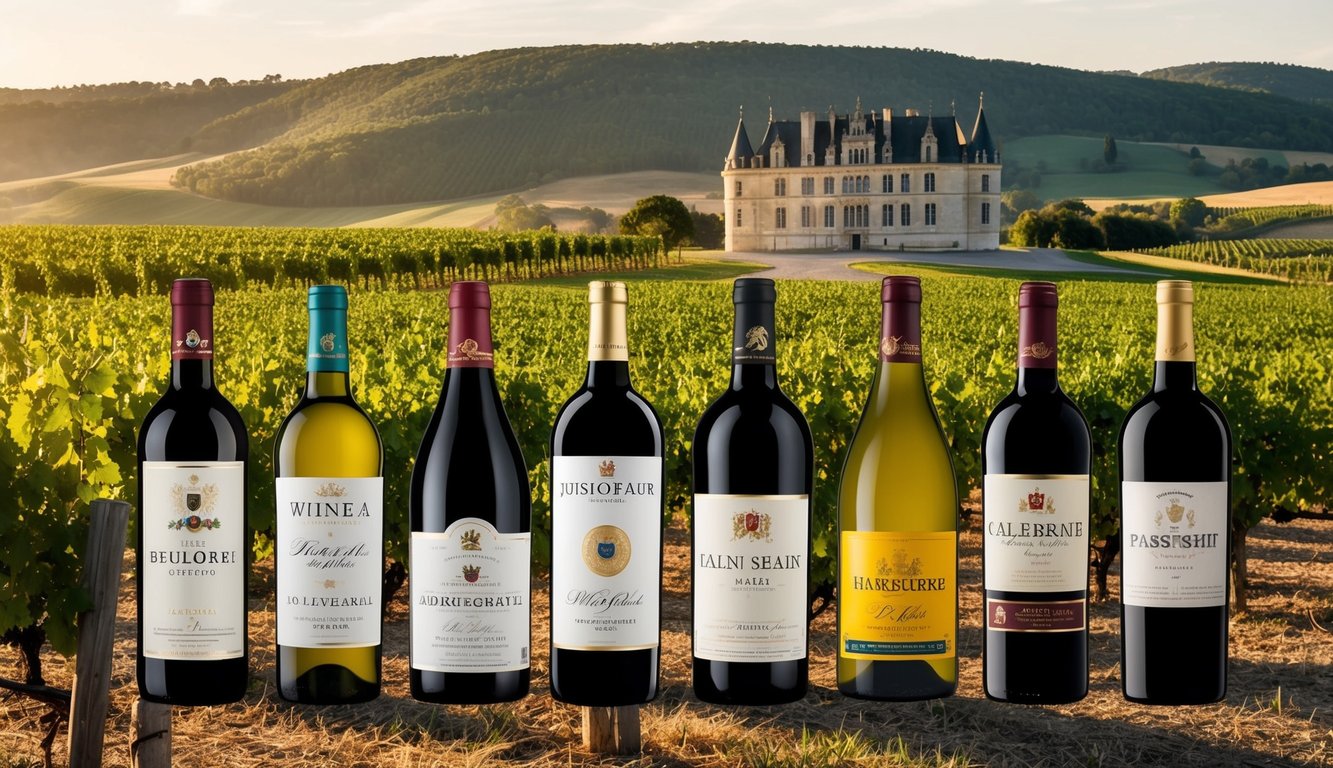
Iconic wine brands have shaped the global wine industry. They’ve set standards for quality and influenced drinking habits worldwide.
Impact on Global Wine Culture
Iconic wine brands have greatly influenced global wine culture. Château Margaux, a famous Bordeaux estate, has long been associated with elegance. Its classic label design emphasizes historical significance and premium quality.
These brands have set benchmarks for excellence. They’ve educated consumers about wine regions and grape varieties. You can see their impact in wine lists at top restaurants worldwide.
Iconic brands have also popularized wine tourism. Many wine enthusiasts plan trips around visiting these renowned estates.
Evolution Through Centuries
Wine brands with rich histories have adapted over time. Ruffino, an Italian winery producing since 1877, has kept its label largely unchanged for over a century. This shows the power of tradition in the wine world.
Other brands have embraced change. In 2015, Château Margaux subtly redesigned its label to mark its 200th anniversary. This blends heritage with modernity.
Many iconic brands started as small family businesses and have grown into global powerhouses. Their evolution reflects changes in winemaking techniques, marketing strategies, and consumer preferences.
Preservation of Traditional Winemaking Techniques
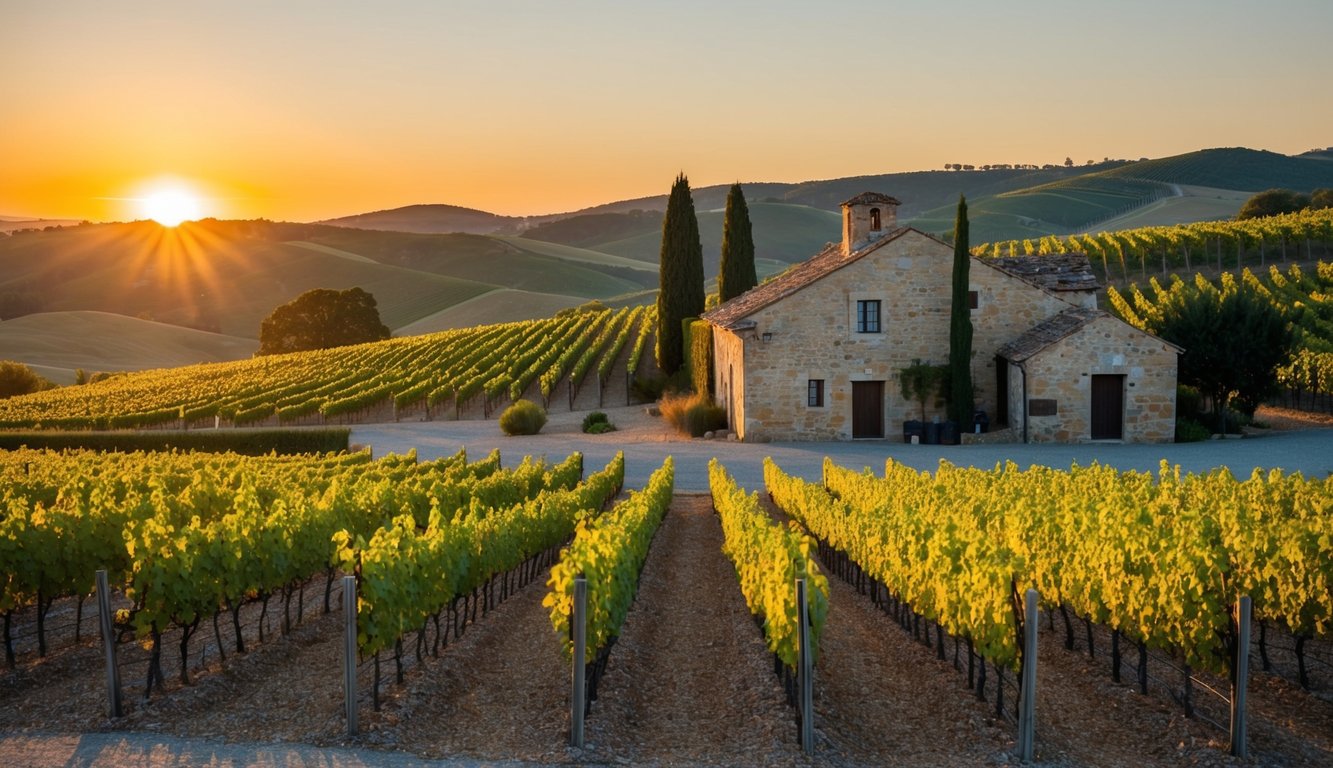
Many iconic wine brands maintain their heritage through time-honored methods. They blend old practices with new technologies to create wines that stay true to their roots.
Adapting to Modern Innovations
Top wineries use a mix of old and new techniques. They might use traditional oak barrels for aging, but add temperature control for better fermentation. Some brands now use stainless steel tanks instead of concrete vats to keep wine clean and fresh.
Modern tools help winemakers track each step of the process. You can see this in how they measure sugar levels and acidity. These tools let them make small tweaks to get the best taste.
Maintaining Quality and Heritage
Quality control is key for keeping wine traditions alive. Many brands still use hand-picking for grapes. This careful selection ensures only the best fruit goes into the wine.
Some wineries stick to old growing systems like Italy’s mezzadria. These methods help keep the unique taste of regional wines.
Brands often train new staff in old ways. This keeps skills alive for future generations. You might see young winemakers learning to blend wines by taste, not just by numbers.
